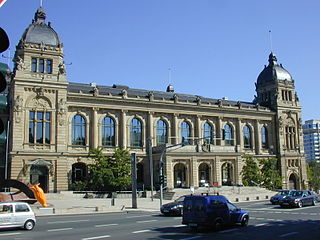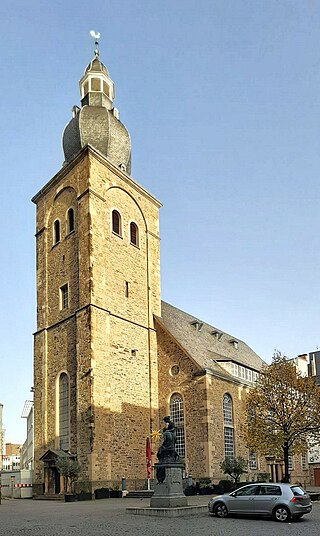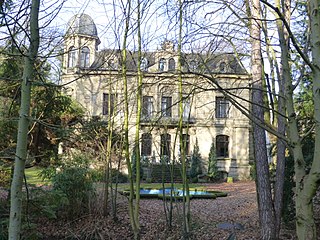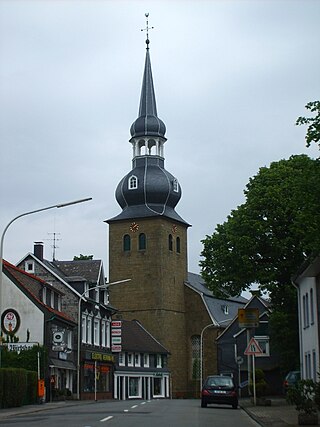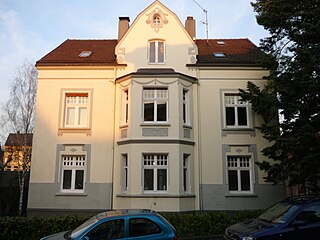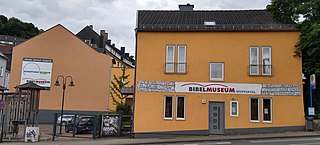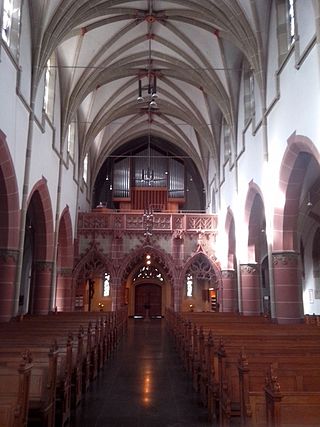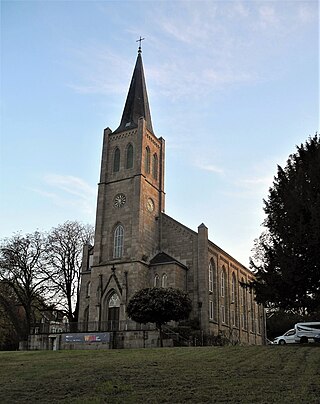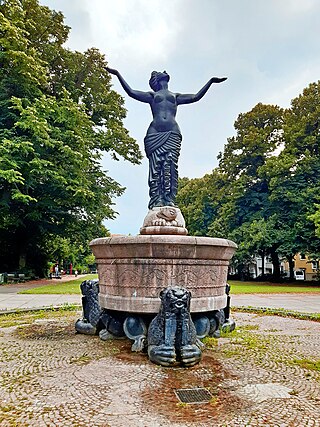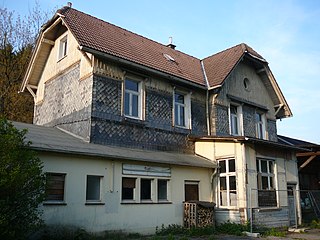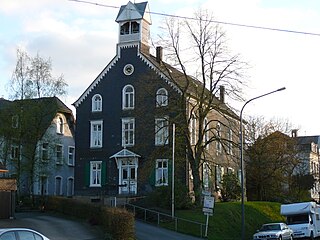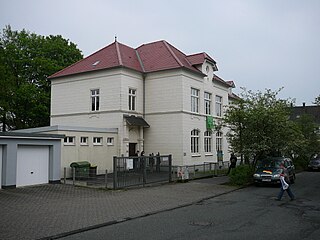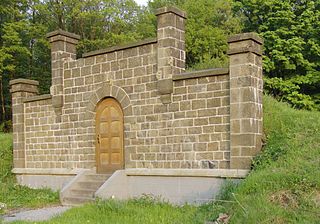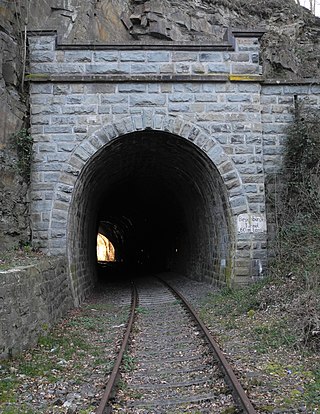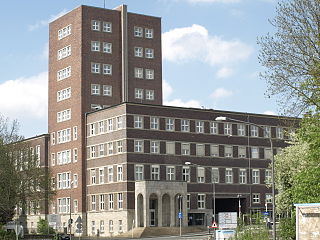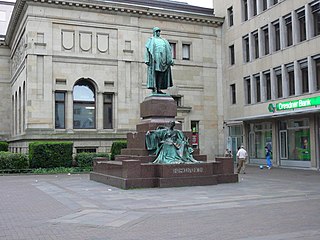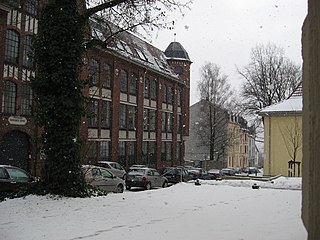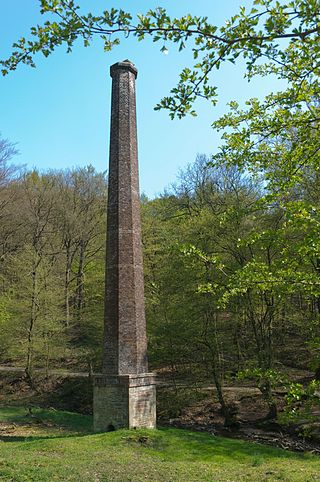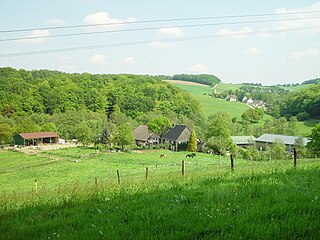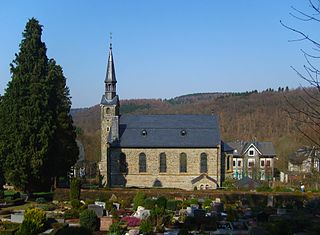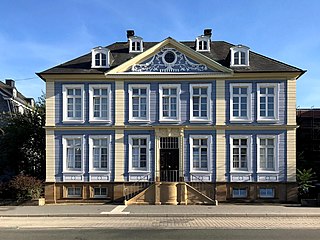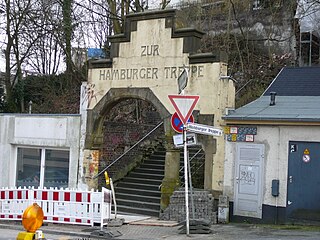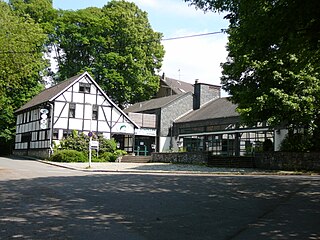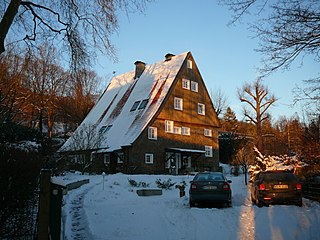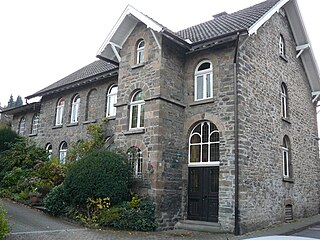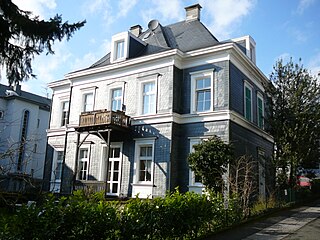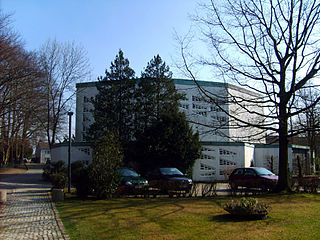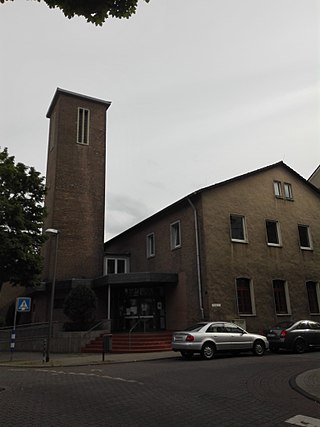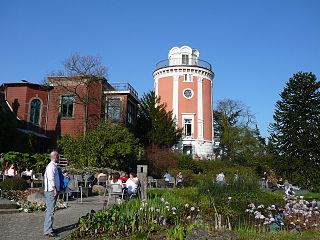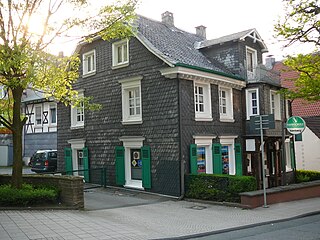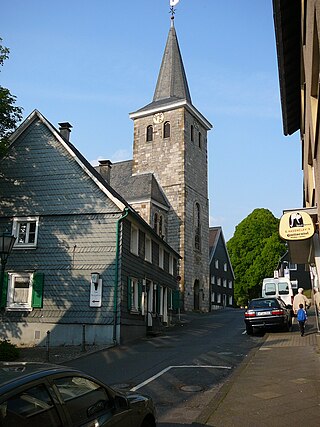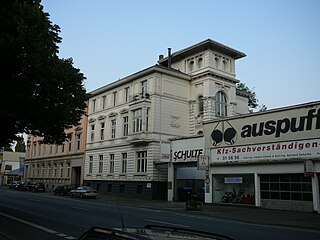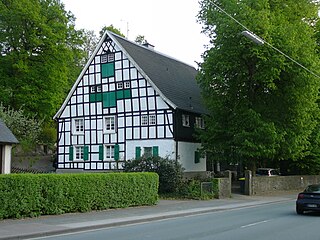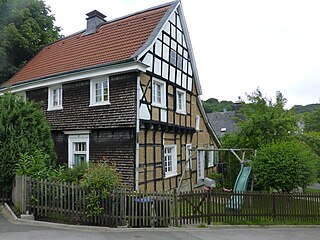76 Sights in Wuppertal, Germany (with Map and Images)
Legend
Welcome to your journey through the most beautiful sights in Wuppertal, Germany! Whether you want to discover the city's historical treasures or experience its modern highlights, you'll find everything your heart desires here. Be inspired by our selection and plan your unforgettable adventure in Wuppertal. Dive into the diversity of this fascinating city and discover everything it has to offer.
Sightseeing Tours in Wuppertal1. Gedenkstätte KZ Kemna
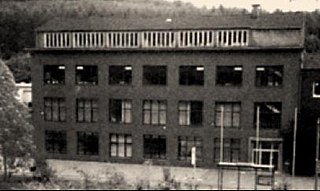
Kemna concentration camp was one of the early Nazi concentration camps, created by the Third Reich to incarcerate their political opponents after the Nazi Party first seized power in 1933. The camp was established in a former factory on the Wupper river in the Kemna neighborhood of the Barmen quarter of Wuppertal. It was run by the SA group in Düsseldorf.
2. Waldfrieden Sculpture Park
The Waldfrieden sculpture park is a sculpture park by the English sculptor Tony Cragg in Wuppertal, in which numerous sculptures by other well -known artists, partly as loan gifts, are also shown. The institution, which has existed as a private museum, is operated by a non -profit foundation that has existed since 2005.
3. Stadthalle
The Stadthalle Wuppertal is one of the most important sights in the city of Wuppertal and at the same time known worldwide as a concert and event venue due to its unique acoustics. It is located on the Johannisberg in the south of Elberfeld, not far from the city centre and Wuppertal's main train station. In the immediate vicinity are the Schwimmoper and the Wilhelm-Dörpfeld-Gymnasium.
4. Wuppertal Hbf
Wuppertal Hauptbahnhof is a railway station in the city of Wuppertal, just south of the Ruhr Area, in the German state of North Rhine-Westphalia. It is on the line between Düsseldorf/Cologne and Dortmund. The 1848 reception building is one of the oldest of its kind. The station was originally Elberfeld station and has been renamed several times since. Since 1992, it has been called Wuppertal Hauptbahnhof. Wuppertal Hauptbahnhof is also the site of lost luggage operations for Deutsche Bahn.
5. CityKirche Elberfeld
The Old Reformed Church is the oldest church in the Elberfeld district of Wuppertal. It is the successor to the Catholic Church of St. Laurentius until the Reformation and has been the main Protestant church of the Wuppertal church district since 2005 as the City Church of Elberfeld.
Wikipedia: Alte reformierte Kirche Elberfeld (DE), Website, Heritage Website
6. Friedhofskirche

The cemetery church in Elberfeld is one of the largest churches in Wuppertal and the third oldest church built for the Reformed Church in Elberfeld. Important Reformed pastors such as the moderator of the Reformed Federation, Hermann Albert Hesse, and the church historian Hermann Klugkist Hesse officiated at the church. With 1,020 seats, it is the second largest Protestant church in the Rhineland after the Basilica of Constantine in Trier.
7. Schloss Lüntenbeck
The Lüntenbeck House, known as Lüntenbeck Castle, is a former moated castle or a permanent house in Wuppertal. With its largely unchanged complex, it is one of the oldest buildings in the city and was one of the twelve manors in the Solingen district.
8. Armenpflegedenkmal
The neoclassical Elberfeld Monument to the Preservation of the Poor is the work of the Elberfeld sculptor Wilhelm Neumann-Torborg (1856–1917), which was erected on 24 September 1903 on the church square of the "Old Reformed Church of Elberfeld". The occasion was the 50th anniversary of the existence of the "Elberfeld System".
9. Gemarker Kirche
The Gemark Church is a Protestant church in the Barmen district of Wuppertal, where the Barmen Confessional Synod of the German Evangelical Church adopted the Barmen Theological Declaration, also known as the Barmen Confession, on May 31, 1934. That was the constituent synod of the Confessing Church.
10. Villa Amalia
Villa Amalia is a villa in the Briller Viertel in the Wuppertal district of Elberfeld-West in North Rhine-Westphalia, Germany. The building has been registered as an architectural monument together with the coach house of the villa in the list of monuments of the city of Wuppertal since 1986.
11. Alte lutherische Kirche am Kolk
The church on the Kolk is the second oldest church building in the Wuppertal district of Elberfeld after the Old Reformed Church. The originally baroque church has been rebuilt and renovated several times, most recently in the 2020s. It was deconsecrated at the end of September 2024.
Wikipedia: Kirche am Kolk (DE), Website, Heritage Website, Youtube
12. Reformierte Kirche
The Reformed Church of Ronsdorf is the place of worship of the Protestant Reformed congregation in Wuppertal-Ronsdorf in the church district of Wuppertal of the Evangelical Church in the Rhineland. It is the only church in the Ronsdorf district that was not destroyed in the Second World War.
13. Lego-Brücke
The Lego-Brücke is a concrete beam bridge which crosses over the Schwesterstraße in the North Rhine-Westphalian city of Wuppertal, Germany. In 2011, graffiti and street artist Martin Heuwold repainted the bridge in the style of Lego bricks, receiving national and international media attention for his work. The work was awarded the Deutscher Fassadenpreis in 2012.
14. Villa Beckmannshagen
The Villa Beckmannshagen is a listed detached villa in the Wuppertal district of Langerfeld on the street Beyeröhde. Until mid-2020, it housed the Children's Museum Schaufenster Schule & Kinderkunst as well as other service companies. Real estate companies have their headquarters on the upper floors.
15. Unterbarmer Hauptkirche
Unterbarmer Hauptkirche is a Protestant church in Wuppertal-Barmen, Germany. The Unterbarmer church is an architectural monument of special importance for two reasons: On the one hand, it is the first church building to be executed by the architect Heinrich Hübsch, and on the other hand, it is one of the earliest known buildings of neo-Romanesque architecture.
16. Bibel- und Schöpfungsmuseum
The Bible Museum Wuppertal on Bendahler Straße in Wuppertal is a free church Bible museum. Its premises were expanded in 2008 and, in addition to the former main building on the corner of Bendahler Straße / Wolkenburg, now also include the immediately adjacent buildings at Bendahler Straße 58–60.
17. Zoo Wuppertal
Wuppertal Zoo is a 24-hectare (59-acre) zoo in Wuppertal, Germany. About 5,000 animals from around the world live at the zoo, representing about 500 species, including apes, monkeys, bears, big cats, elephants, as well as birds, reptiles, and fish.
18. Villa Seyd
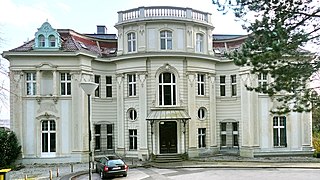
The Villa Seyd is located in the Wuppertal district of Uellendahl-Katernberg, Adalbert-Stifter-Weg 54, and is one of the largest villas in Wuppertal. It was built from 1897 to 1899 on behalf of the manufacturer Carl Hermann Seyd according to a design by the Elberfeld architect Heinrich Plage. Protected as an architectural monument since 19 December 1984, it is listed on the list of monuments of the city of Wuppertal under No. D227.
19. Johanneskirche
The Johanneskirche is located in the south of the Wuppertal district of Elberfeld on the edge of the von der Heydt Park, near the Friedenshain. Since 1970, it has belonged to the Evangelical parish of Elberfeld-Südstadt in the Wuppertal church district of the Evangelical Church in the Rhineland.
20. St. Maria Empfängnis
The Church of St. Mary's Immaculate Conception in Wuppertal-Vohwinkel is a Roman Catholic church and, along with the churches of St. Bonifatius, Sankt Ludger and Sankt Remigius, one of the four preaching places of the Wuppertaler Westen Parish Association.
21. Die starke Linke
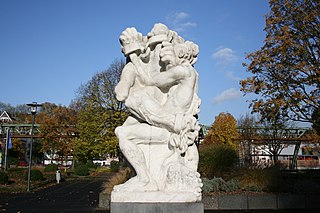
The Strong Left is a sculpture by the Austrian sculptor Alfred Hrdlicka, who died in 2009 in Wuppertal-Unterbarmen. Until it was erected, it caused a local scandal because of the late completion and the exploded costs. Until the Engels monument was erected in 2014, the Hrdlicka sculpture was sometimes also referred to as the Friedrich Engels Monument.
22. Helmut
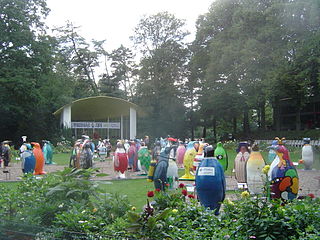
The Penguinale was a campaign to celebrate the 125th anniversary of the Wuppertal Zoo, in which plastic penguins with distinctive painting were positioned throughout the city. The penguin is the heraldic animal of the zoo and so the penguinale was also created after it.
23. Familien- und Begegnungshaus
The Wichlinghausen Church in the Wuppertal district of Oberbarmen is a traditional church building in the district of Wichlinghausen. Until its deconsecration in 2014, it was a church of the Protestant parish of Wichlinghausen-Nächstebreck in the church district of Wuppertal, and since 2015 it has been used as a district centre.
24. Gerechtigkeitsbrunnen
The Fountain of Justice is a fountain in Wuppertal-Elberfeld designed by the sculptor Bernhard Hoetger, which was inaugurated in 1910 during the festival week for the 300th anniversary of Elberfeld on the former "parade ground".
25. Neue Kirche
The New Reformed Church, also known as the New Church, Second Reformed Church, popularly known as the Sophienkirche after the street on which it stands, is the second church built for the Reformed Church in today's Wuppertal district of Elberfeld.
Wikipedia: Neue reformierte Kirche (Wuppertal) (DE), Website, Heritage Website
26. Bergische Museumsbahnen e.V.
The Bergische Museumsbahn is a heritage tram museum situated in the German city of Wuppertal. It operates its own tram line south of Wuppertal on original rails with original cars. Therefore, it's one of the smallest running tram systems in the world. Wuppertal still operates the "Schwebebahn", a unique overhead railway.
27. Alter Hatzfelder Wasserturm
The Old Hatzfeld Water Tower is a disused water tower in the Wuppertal district of Barmen, in the Hatzfeld district of Wuppertal. The water tank, built in 1904 under the direction of Barmen's city architect Julius Dicke at an altitude of 298 m above sea level, represented an important link in the drinking water supply of the then independent city of Barmen. From the Volmarstein community waterworks in Wetter an der Ruhr, also known as the Barmer waterworks, the water was pumped via the Loh water tower in Volmarstein to Barmen in the Hatzfeld water tower. The Loh–Hatzfeld railway had its terminus under the tower.
28. Küllenhahner Bahnhof
Wuppertal-Küllenhahn station is a historic railway station in Wuppertal, Germany. The station building is located in the Cronenberg district in the Küllenhahn district and is located on the Wuppertal-Steinbeck–Wuppertal-Cronenberg railway, which opened on 1 April 1891 and was closed in 1988.
29. Pauluskirche
St. Paul's Church in the Wuppertal district of Unterbarmen, the westernmost district of the old town of Barmen, today the Barmen district of the city of Wuppertal, is the second church built for the United Evangelical Community of Unterbarmen.
30. Bahnhofsempfangsgebäude Barmen
Wuppertal-Barmen station is a station in the city of Wuppertal in the German state of North Rhine-Westphalia on the Elberfeld–Dortmund railway. Its entrance building is protected as a monument. It was Barmen Hauptbahnhof prior to Barmen's incorporation in Wuppertal in 1929. Before the Second World War it was an important stop for express trains and had substantial freight traffic. Its importance declined after the war in favour of Oberbarmen and since the renaming of the Elberfeld station as Wuppertal Hauptbahnhof. The Opernhaus Wuppertal is nearby.
31. Sankt Joseph
The Church of St. Joseph in Wuppertal is the Catholic parish church for the west of Elberfeld. Along with the churches of St. Suitbertus, St. Marien and St. Laurentius, it is part of the parish of St. Laurentius in Elberfeld-Mitte and its westernmost place of preaching.
32. Hottensteiner Kirche
The Hottenstein church in the Wuppertal district of Oberbarmen is the originally Lutheran church of the peasantry of Nächstebreck and the population of the urban settlement of the mountain ridge on the Hottenstein, consecrated in 1879. In addition to the Church of the Redeemer, it is the second preaching site of the Protestant parish of Wichlinghausen-Nächstebreck in the Wuppertal church district of the Evangelical Church in the Rhineland.
33. Jugend- und Kulturzentrum
The former Ronsdorf Rectorate School is a historic school building in Ronsdorf, a district of the Bergisch city of Wuppertal in North Rhine-Westphalia since 1929. The school building, which has been a listed building since 27 February 1998, is located in the Ronsdorf-Mitte/Nord residential district at Scheidtstraße 36.
34. Stadion am Zoo

The Stadion am Zoo is a multi-purpose stadium in Wuppertal, Germany. It is currently used mostly for football matches and hosts the home matches of Wuppertaler SV. The stadium is able to hold 23,067 people and was built in 1924.
35. Wasserbehälter Wuppertal-Langerfeld
The water tank on the Ehrenberg in Wuppertal-Langerfeld was built from 1902 to 1904 in the form of an underground three-aisled barrel vault and according to the designs of the Aachen hydraulic engineering professor Otto Intze. Apart from the shield wall, only mass concrete was used as building material.
36. Werther Brücke
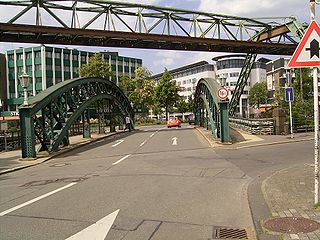
The Werther Bridge is a road bridge built in 1903 with two lanes over the Wupper in the Wuppertal district of Barmen. As part of the Heidter Berg road, it connects the southern bank of the Wupper with the Barmen city centre (Werth) in the north. The bridge is set up as a one-way street, in a northerly direction, and is located in the immediate vicinity of the Werther Brücke suspension railway station, which is named after it.
37. Reformierte Kirche
The Reformed Church in Cronenberg is one of the most striking churches on the southern heights of Wuppertal in the Cronenberg district and is considered one of the most beautiful churches in the Bergisches Land due to its proportions and the particularly successful onion dome.
38. ehemaliges Amtsgericht Ronsdorf
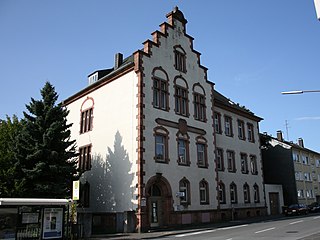
The former district court of Ronsdorf, located at Erbschlöer Straße 9, was the district court of the then small town of Ronsdorf, since 1929 a district of the Bergisch city of Wuppertal in North Rhine-Westphalia. The building is a listed building.
39. Beyenburger Tunnel
The Tunnel Zur guten Hoffnung, also known as the Beyenburg Tunnel, is a 60 m long railway tunnel in Wuppertal. It is located on the Wuppertal Railway, which opened in 1890, between Beyenburg station and Wuppertal-Laaken station near the residential area of the same name. At 60 metres, it is the shortest of all eleven Wuppertal railway tunnels.
40. Museum für Frühindustrialisierung
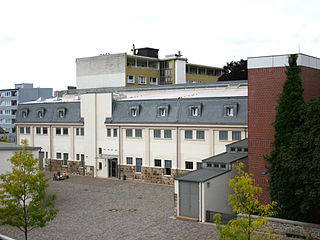
The Museum of Early Industrialization is a museum of industrial and social history in Wuppertal-Barmen, Germany. It is a location of the Museum of Industrial Culture Wuppertal. The theme of the museum is the early development of industry in Wuppertal in the diverse interplay of technical, social, economic and mentality historical factors. The museum was opened on 23 October 1983 and was the first socio-historical museum to address industrialisation at the time.
41. Kohlfurther Brücke
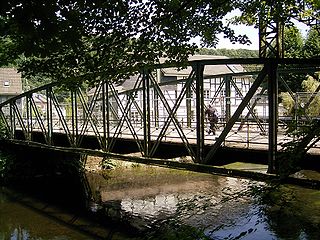
The Kohlfurther Bridge is a truss bridge made of steel over the Wupper river in the borough of Cronenberg in Wuppertal, located on the city limits of Solingen. It served the Straßenbahn from Elberfeld to Solingen until the tramway was shut down in 1969, at which point it became a pedestrian bridge. The name of the bridge is also the name of a street. On April 13, 2006, it was registered in the architectural list, the Baudenkmalliste, of the city of Wuppertal and on May 3, 2006 in the city of Solingen. An extensive restoration was completed on May 8, 2010.
42. Wuppertaler Brauhaus
The Stadtbad Kleine Flurstraße is a preserved historic municipal swimming pool in the Barmen district of Wuppertal. The building is registered as an architectural monument in the list of monuments of the city of Wuppertal.
Wikipedia: Stadtbad Kleine Flurstraße (DE), Website, Website
43. Johnson Controls IFM Industrie GmbH
The consumer cooperative "Vorwärts-Befreiung" was a large consumer cooperative in Wuppertal. It emerged from the merger of the cooperatives "Befreiung" and "Vorwärts" as well as "Haushalt" in Velbert in 1924. Previously, several attempts to unite the Elberfeld and Barmer cooperatives had failed.
44. Steigerturm
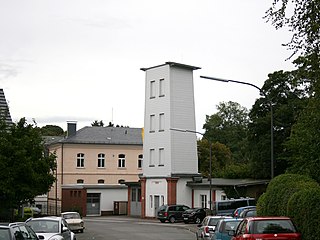
The Steigerturm Ronsdorf is a prominent monument in Ronsdorf, a present-day district of the Bergisch city of Wuppertal in North Rhine-Westphalia/Germany. The Steigerturm is located in the area of the older site of the fire station in Ronsdorf. On the left is the old part of the vehicle halls with parking spaces for two emergency vehicles. To the right of the tower is the former recreation room of the extinguishing unit, which is now used by the youth fire brigade.
45. Altes Amtshaus
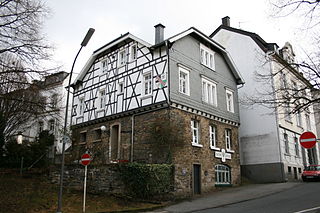
The old office building, also known as the old guardhouse, is a historic office building in the Wuppertal district of Langerfeld, which was independent until 1922. Since the incorporation of Langerfeld, the building has been used as a residential building.
46. Villa Carnap

The Villa Carnap is a slate half-timbered house in Wuppertal-Ronsdorf in the residential district of Ronsdorf-Mitte/Nord. It is located on In Crimea Street, house number 42. The city villa is located "in the second row" about 50 meters from the road, is surrounded by tall trees and borders directly on the Ronsdorf facilities. The two-and-a-half-storey house was built in 1890 by Johannes Sebulon Carnap in what was then Waldstraße. It is now a listed building and is inhabited. The villa has an almost rectangular floor plan with some bay windows and ornamental decorations on the window friezes and gable eaves.
47. Otto Graf von Bismarck
The Bismarck monument in the then independent city of Barmen was inaugurated in 1902. It was created by the Berlin sculptor Hugo Lederer and originally stood in front of the old Barmen town hall on Werther Straße ; In the autumn of 1921, the year of completion of the new Barmen town hall, it was moved to its current location in front of the Barmen Hall of Fame on Geschwister-Scholl-Platz.
48. Cleff´sche Mühle

The Cleff'sche Mühle is a former mill complex in the Wuppertal district of Unterbarmen. The property at Warndtstraße 7 as a mill building with a residential building, including the historic furnishings and the mill ditch on the Wupper, has been protected as an architectural monument since 1 September 1989.
49. Knopffabrik PSW
The PSW button factory is a factory building in the Sedansberg residential district of Wuppertal and is a listed building according to § 2 para. 1 DSchG NRW. It is the production site of the Bielefeld-based companies Union Knopf GmbH and PSW-Knopf GmbH. The latter company is also responsible for the common name Knopffabrik PSW.
50. Villa Spindler
The Villa Spindler is a villa in the Wuppertal residential district of Arrenberg, in the district of Elberfeld-West. It is located in the section of Friedrich-Ebert-Straße, which is classified here as Bundesstraße 7.
51. Hammerschlot
The Obere Jansenkotten was a Schleifkotten in the Gelpetal in the Wuppertal district of Elberfeld (North Rhine-Westphalia). It is located directly on the border with the districts of Cronenberg and Ronsdorf. Here the Eichholzbach flows into the Gelpe at an altitude of about 235 metres above sea level. The building was demolished in 1908, only the chimney has been preserved and was registered as an architectural monument in the list of monuments of the city of Wuppertal.
52. Wollbruchsmühle
Wollbruchsmühle is a former watermill and today's district in the north of the Bergisch city of Wuppertal. Until the second half of the 20th century, the village consisted of two immediately adjacent residential areas, the Wollbruch farm and the Wollbruchsmühle mill complex. After the mill left, the name Wollbruchsmühle was transferred to the farm.
53. Tageseinrichtung für Kinder
The Kaiserin-Augusta-Stift in the Wuppertal residential district of Arrenberg in the district of Elberfeld-West is a former retirement home and was built in 1895 in the then independent city of Elberfeld. It had been set up for old, single and "irreproachable" women from working-class circles, who found accommodation, food and supplies here.
54. Evangelische Kirche Beyenburg
The Evangelical Church of Beyenburg is a church building in Beyenburg, a district of Wuppertal, Germany. It is the centre of the parish of Beyenburg-Laaken. The congregation has 2442 members, after the two congregations in Beyenburg and Laaken merged in 2003.
Wikipedia: Evangelische Kirche Beyenburg (DE), Website, Website
55. Haus Barthels
Haus Barthels is a listed villa in the Wuppertal district of Barmen and on Friedrich-Engels-Allee. The property with the address Friedrich-Engels-Allee 384 is a former merchant's villa in the Empire style. The two-storey house was built in 1790 at Berliner Straße 100 and has been inhabited by the entrepreneur Philipp Barthels since about 1820.
56. Hamburger Treppe
The Hamburg Stairs is a listed outdoor staircase in the Wuppertal district of Uellendahl-Katernberg. According to the Lower Monument Authority, the Hamburg Staircase is one of the most elaborate of the city's surviving historic staircases.
57. Gesellschaftshaus Union
The Gesellschaftshaus Union is a listed residential building in Wuppertal-Barmen since 1993 at Friedrich-Engels-Allee 202. It was built in its original form between 1867 and 1871 in the style of classicism and since 1968 has housed the Union Society, founded in 1829.
58. Haus der Jugend
The Barmer Ruhmeshalle is a historic building in the Barmen district of the German town of Wuppertal, originally built as a hall of fame. It was officially known as the Kaiser Wilhelm- und Friedrich-Ruhmeshalle and later as the Haus der Jugend.
59. Hahnerberg
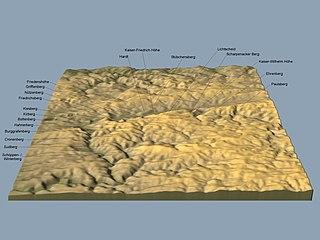
The Hahnerberg [haːnɐˈbɛʁk] is a 330 m high elevation in North Rhine-Westphalia, in the western part of the city of Wuppertal in the Cronenberg district and is also the namesake for a residential quarter Hahnerberg.
60. Haus Schöller
The property at Schöllerweg 4, sometimes referred to as Haus Schöller, is one of the oldest surviving buildings in the old town centre of Schöller, a district in the Wuppertal district of Vohwinkel. The building has been protected as a listed building since 10 June 1994.
61. Hof Klingelholl
The Klingelholl farm is a listed former manor house in the Wuppertal district of Barmen on the edge of the Barmer Nordpark. The building is one of the last surviving farm houses in the Barmens area and represents a landscape-defining individual monument.
62. ehemalige Mühle
The property Am Kriegermal 34 is a listed building that was built as a mill in the Wuppertal district of Beyenburg. It is one of the oldest buildings in the district, which were erected outside the original settlement core on the Beyenberg at the Steinhaus monastery. On April 22, 1993, it was recognized as an architectural monument.
63. Villa Simons
The Villa Simons is a slate villa in the style of a Bergisch house in the Nützenberger Straße in Wuppertal-Elberfeld. The two-storey building has a five-axis design on the front side facing the street and the garden with a three-axis central risalit.
64. Haus Röhrig
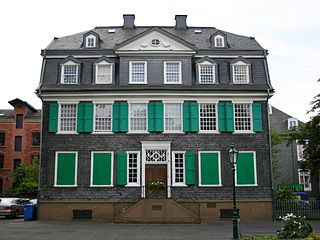
The two-storey Röhrig House, built in 1789, together with the Barthels House and the Engels House on the edge of the Engelsgarten, forms an important historical urban building ensemble of the Historic Centre, near Friedrich-Engels-Allee in Wuppertal-Unterbarmen.
65. St. Hedwig
St. Hedwig is a Roman Catholic church in the north of the Wuppertal district of Cronenberg and, together with the churches of Heilige Ewalde, St. Christophorus in Lichtenplatz and St. Joseph in Ronsdorf, part of the parish association of Wuppertaler Südhöhen.
66. Rotter Kirche
The Rotter Church is a Protestant church in the district of Rott in Wuppertal-Barmen and, together with the Unterbarmer Hauptkirche and the Pauluskirche, was the place of preaching of the United Evangelical Church of Unterbarmen.
67. Botanischer Garten
The Botanischer Garten Wuppertal, also known as the Botanischer Garten der Stadt Wuppertal, is a municipal botanical garden located at Elisenhöhe 1, Wuppertal, North Rhine-Westphalia, Germany. It is open daily without charge.
68. Haus Goebel
The Goebel House is a two-storey residential building with the address Spitzenstraße 5 in Wuppertal-Langerfeld and was built in 1785 on the courtyard of the former Heilenbeck estate. The client was Friedrich Keggemann, Langerfeld's first surgeon. It has been owned by the Goebel family since 1849. In 1870, the Goebel bookbindery and later the Goebel cardboard factory were founded.
69. Alte Kirche Langerfeld
The Alte Kirche is a Protestant church in the district Langerfeld of Wuppertal. It is one of two churches of the Protestant congregation Langerfeld and is located between the Odoakerstraße and the Schwelmer Straße. It was built from 1768 to 1786; the first service took place on 24 September 1786, and was celebrated to the memory of Frederick II of Prussia.
70. Haus Vedder
The two-storey residential and commercial building at Odoakerstraße 1 in Wuppertal-Langerfeld was built around 1740. The half-timbered house is only slate on the western side towards Langerfelder Markt and covered with a gable roof. The northern side, towards Schwelmer Straße, was later extended by an extension with a pitched roof. The building has a floor area of around 158 m².
71. vierwändewerk
The property Friedrich-Ebert-Straße 139 is a residential building in the Wuppertal residential district of Arrenberg, in the district of Elberfeld-West. It is located in the section of Friedrich-Ebert-Straße, which is classified here as Bundesstraße 7.
Wikipedia: Friedrich-Ebert-Straße 139 (DE), Heritage Website
72. Bleicherhaus Tönnies
The Bleicherhaus Tönnies is a two-storey residential building with the address Öhder Straße 51 in the Wuppertal district of Langerfeld-Beyenburg in the district of Öhde. The Bleicherhaus, built in 1712 by the Tönnies family in half-timbered construction, is partly slate and covered with a gable roof. The compartment is visible to the northern and eastern façades. There are two large storage rooms under the pitched roof, and a fire- and thief-proof yarn chamber is also embedded on the north-western side.
73. Bleicherhaus Lüttringhaus
The Bleicherhaus Lüttringhaus is a two-storey residential building with the address Öhder Straße 31 in the Wuppertal district of Langerfeld-Beyenburg in the district of Öhde. The Bleicherhaus, built in 1718 on a massive plinth in half-timbered construction, is partly slated and covered with a gable roof. At the back, it was supplemented by a two-storey extension, which was built in 1904.
74. Pfaffenhaus
The property Hainstraße 195 is a residential building in Wuppertal, in the district of Uellendahl-Katernberg, in the residential district of Nevigeser Straße. The building on Hainstraße is also known as the Pfaffenhaus and is a listed building. It also gives its name to the Pfaffenhaus residential area.
75. Hofeshaus in der Leimbach
The Hofeshaus in der Leimbach is a listed former manor house in the Wuppertal district of Barmen in the Sedansberg residential district. The building belonged to the residential area of Obere Leimbach west of the Leimbach, a tributary of the Wupper.
76. Kath. Kirche St. Ludger
The Church of St. Ludger in Wuppertal-Vohwinkel is a Roman Catholic church of the parish association of Wuppertaler Westen. It was built between 1961 and 1964 according to plans by the Cologne architect Rudolf Schwarz.
Share
Disclaimer Please be aware of your surroundings and do not enter private property. We are not liable for any damages that occur during the tours.

